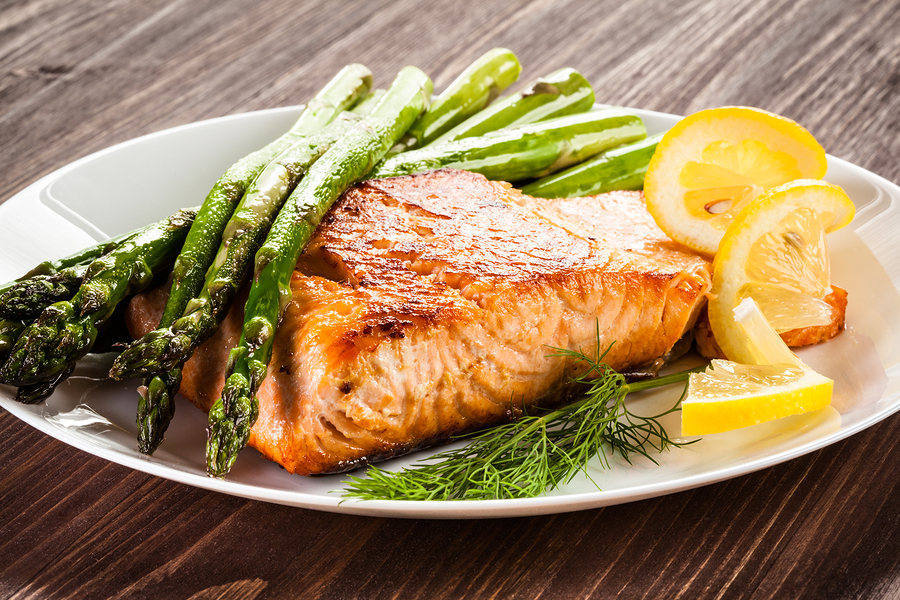- Make It Yourself Lavender Heart-Shaped Bath Bombs!
- 20 Things You Never Knew About “Down There”
- 12 Best Foods For Those Suffering From Arthritis Pain
- 12 Personal Hygiene Mistakes Almost Everyone Makes (Mom Never Told You About #4!)
- 15 Medicinal Plants And Herbs From The Cherokee People
- 12 Mind-Blowing Benefits Of Drinking Coconut Water During Pregnancy
- 12 Outstanding Winter Foods That Won’t Fatten You Up Like A Christmas Turkey
5 Vital Tips To Buy The Best Asparagus
Asparagus is a cold-weather plant of the lily family which is eaten as a vegetable. Asparagus can be found in white, purple, or green. White asparagus is actually asparagus grown without sunlight which is popular in Europe for its gentle taste. Asparagus is found in most grocery stores canned, frozen, or fresh, though fresh is by far the tastiest.
Asparagus is high in vitamins A, E, and K, and a slew of minerals, such as magnesium, zinc, and selenium. Though not everyone loves asparagus, it’s a delectable and healthy treat for most.
Types of Asparagus
Organic asparagus is grown without pesticides and is not genetically modified. Though it may be healthier, it is also more expensive.
Conventional asparagus is typically sprayed with nine pesticides, of which some are known carcinogens. However, conventional asparagus will be more readily available and less expensive than the produce grown without pesticides.
Frozen and canned asparagus is available, although it may not create as fresh and healthy of a product as fresh asparagus. These are both great options for the months which asparagus is not in season.
What to Look for In the Best Asparagus
-
Buy asparagus the day you plan to eat it.
Asparagus does not store well, so buy it within a day of the time you plan to cook it. Frozen and canned asparagus is an option if it is not in season in your area.
-
Purchase asparagus in season.
Asparagus is a cold-weather vegetable, so buying in season assures you are getting the highest quality stalk. Early winter is when you will see this delectable green hit the grocery stores, but it will be sooner or later depending on if you live in the north or south. Asparagus will appear in groceries sooner in southern climates. You will pay a premium for buying asparagus out of season.
-
Opt for the same size stalks.
Asparagus, like any plant, can be short or tall. Choose a bunch that is the same size and thickness, and you will have evenly cooked stalks. Thinner stalks will become soft, while thicker stalks will stay firmer.
-
Look for healthy looking asparagus, such as:
Firm Stalks – Malleable stalks show that the asparagus is not as fresh as firm stalks.
Vibrant Color – A faded color depicts a less fresh product.
Tightly-closed Buds – Tightly-closed buds (the top of the asparagus) indicate freshness. -
Keep Your Cool.
Grocers should chill asparagus to keep it fresh, so opt for the asparagus that may be on the bottom of the pile, closer to the cooling unit. Be sure to keep it cool for transport, and store fresh asparagus correctly in the refrigerator.
How to Cook the Best Asparagus
Asparagus is typically grilled, roasted or sautéed, drizzled with olive oil, salt and pepper. It can also of course be eaten raw, which is the healthiest way to eat asparagus. Blanched or steamed asparagus is another healthy option. Asparagus is great in stir frys, wrapped in bacon, or as its own as a side dish.
You don’t want to overcook asparagus, as it becomes mushy. Be sure to check your asparagus as it’s being cooked with a fork to test its tenderness.
RELATED: Asparagus: Fun Facts And Health Benefits Video
Storing Asparagus
Though fresh asparagus does not store well, you can keep asparagus as if it were a flower. Trim the stalks when you get home, and place in a small amount of water in a glass jar in the refrigerator covered lightly by plastic wrap. You can also place in a plastic bag entirely, while wrapping the bottom of the stems with a damp paper towel. However, try to purchase asparagus within one day of cooking it. Of course, canned and frozen asparagus will keep much longer so it may be best to buy canned or frozen asparagus when fresh asparagus is not in season in your area.
Asparagus is a healthy and delicious vegetable. Be sure to buy the best asparagus to enjoy its health benefits, and prepare it correctly to ensure the best taste.
References:


































